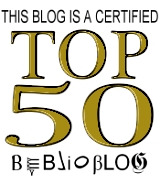Although one may quibble with where France perceives the major geographical shift the more substantive question is what does Matthew make of the geography? After providing what France hopes is not “a complete caricature” of Galilee, he affirms the prevailing view that the north-south divide is ideological in Matthew. Taking his cues of course from Mark’s narrative structure, Matthew has “enhanced the ideology he found in his Markan source”. France believes then that Matthew presents confrontation between the northern prophet and the southern establishment of Judea. As evidence he presents the label “Nazarene” from 2:23 in which he detects a “dismissive tone of a superior Judean observer. When Jesus arrives in Jerusalem, Matthew records both the comments of the people of the city (21:10-11) and what he characterizes as “two rival teams of Galileans and Judeans” who are “starkly opposed in their attitudes” to Jesus (7). Peter, whom France characterizes as “distinctive a northerner as his master” is noticed as a potential follower of Jesus the Galilean in 26:69. Most significantly for France is the Gospel’s climax taking place not in the “holy city”, but in Galilee. Galilee not Jerusalem is the place where the messianic mission is launched. This evidence then for France reveals “a Galilee/Jerusalem schema” (7).
While I applaud France’s appreciation of Matthew’s geographical theology, I find his understanding of its importance unsatisfying. A purely north-south divide cannot to my mind explain many of the territorial additions found in Matthew (e.g. 4:12-17; see comments below).
Author, Date, Setting, and Synoptic Relationships
Notable points on these issues are as follows:
- France “softly” advocates the traditional view that the author of Matthew is the Apostle.
- France has a more sophisticated understanding of the situation on the ground in early Christianity that makes the questions of extra muros or intra muros even more difficult to ascertain or better perhaps simply anachronistic. A clear break between Judaism and Christianity is a much later phenomenon that was a gradual process. He states “The specific point of ‘explosion’ in relation to which the situation of the Matthean community has commonly been assessed seems to me more a modern scholarly simplification than a realistic account of the likely pattern of relations between Jews and Christians in the first century” (16).
- France thinks the view, advocated most distinctly by D. Sim, that Matthew’s gospel was composed by an exclusively Jewish community (i.e. not mixed: Jews and Gentiles) whose interests, at least at the time of composition, were not focused on mission to the Gentiles is merely a passing fade. His doubt is not well disguised in his dismissive comment that the “trend . . . coheres well with currently fashionable attempt[s] to reclaim the historical Jesus for Judaism and to play down the extent of his challenge to scribal tradition” (17). Further, he accuses such interpretations as being as “one-sided in its reading of the evidence” as its opposite position on the question. He concludes: “I suspect that a commentary written in twenty year’s time would not feel obliged to give it so much attention” (17).
- France believes that the Matthean community is both “inside” and “outside” the Judaism of the late first century given its convictions about the person of Jesus of Nazareth and its inclusion of Gentiles within its borders as well as the rejection of such ideas by the traditional Jewish institutions. Thus, he concludes, “Matthew portrays a new community which is both faithful to its scriptural heritage and open to the new directions demanded by Jesus’ proclamation of the kingdom of heaven, and therefore necessarily expanding beyond the bounds of the Jewish people” (18).
- France finds the pillars upon which the consensus of scholarly opinion regarding the date of Matthew to be suspect. While not seeing it of “great exegetical importance”, he nevertheless “favors” the position that Matthew was written in the sixties while the temple was still standing (19).
- France employs a modified and chastened approach to the question of synoptic relationships. He believes in the priority of Mark, but advocates a perspective of the process of composition as much more “fluid” than has been the case. This fluidity would allow for “the process of mutual influence between various centers of Christian gospel writing” (21). Where he thinks Mark’s most influential on especially Matthew is in the narrative structure “with a single journey of Jesus from north to south” (21). As for the Q hypothesis, France has little sympathy. Although happy to suggest Q tradition, the specificity with which scholars today speak of the “Q community” and “recensions of Q” leave him “cold” (22). In this light, France describes his approach:
I am more reluctant than many other interpreters to speak simply of how Matthew has “redacted” Mark’s material or to attempt in Q material to discern how Matthew has “adapted” the common tradition. I regard the Marcan and Lucan parallels as other witnesses to the traditions Matthew had available, but not necessarily as his direct sources. Where he differs from them, it may be because he is deliberately altering the tradition as they have recorded it, but it may also be because he has received the tradition in a rather different form. This commentary will therefore call attention to differences between the Synoptic accounts where they help to highlight the distinctive contribution of Matthew, but without always assuming direct dependence and therefore deliberate alternation of an already formulated tradition. (22).




No comments:
Post a Comment